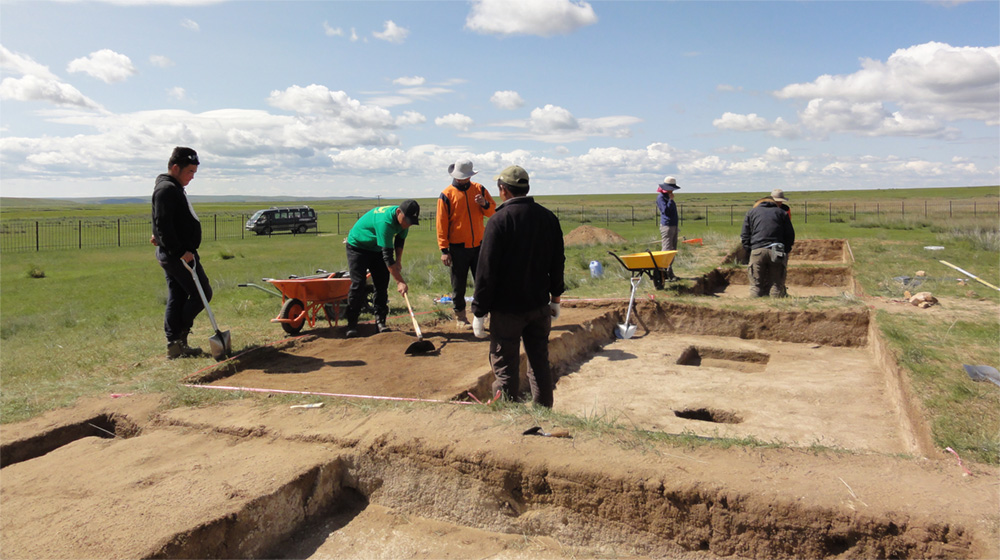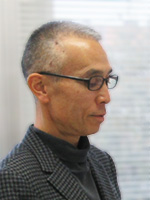[Interview] Study of Genghis Khan—Developing New Ideas from Old Ones – SHIRAISHI Noriyuki

Prof. SHIRAISHI Noriyuki is an archaeologist specializing in the excavation and research of the remains in Mongolia. By unveiling the life of Genghis Khan, a man who left his mark on history, Prof. Shiraishi explores ideas that will help create a sustainable society for the future. He explains in a comprehensive manner what he means by this and why it’s significant.
Why tease apart the Mongolian history now?
――Your specialization is archaeology. What is the study about?
Shiraishi Many people mistakenly think that archaeology is about studying dinosaur fossils. Archaeology is the study of past human activity through the recovery of remains. Fossils are also tangible remains, but they are not included in the subject of archaeology because they were of living things extinct before the birth of humanity. Archaeology is part of history in a broad sense, but archaeology characteristically deals with things like earthenware, stone artifacts, pit dwelling, and ancient tombs rather than with ancient documents.
――To me, archaeology seems like a study of ancient times like thousands years ago, such as the Jomon or Tumulus period.
Shiraishi Archaeology studies are not necessarily limited to ancient times. As an extreme case, for example, some archaeologists argue that a plastic bottle thrown away in a garbage can a few hours ago can also be an object of archaeology because it involves the past human activity. Likewise, Genghis Khan who lived in the 13th century and his times can also be included in the scope of archaeology.
――What made you study Genghis Khan?
Shiraishi The Mongolian Plateau, which was home to Genghis Khan, is a land with temperatures fluctuating widely from minus 50 degrees Celsius in winter to 40 degrees Celsius in summer. On top of that, the land is arid with an annual rainfall of 50-300 millimeters. I was curious to know the reason why a land with such a severe natural environment produced a great ruler like Genghis Khan.
――Genghis Khan is a very famous figure who appears in textbooks. As there is naturally much ancient writing about him, I would assume that you could conduct research based on them, not on archaeology.
Shiraishi Genghis Khan was the first emperor of the Mongolian Empire as well as the conqueror of a vast territory that stretches across Eurasia from east to west. While Mongolian people revered Genghis Khan as an excellent ruler like God, the conquered denounced him as a brutal massacrer. There exists a number of ancient documents written about him; some of them highly praise him and some severely criticize him, which makes it difficult to use the content as they exist.
We thus do not know the truth about his life at all, such as when and where he was born, where and how he lived, where he died, or where he was buried. This is why I initiated an archaeological approach. Material remains tell historical facts unless distorted at a later date.
――What are your findings from your research of Genghis Khan?
Shiraishi Our research team has been conducting excavation surveys for twenty years at the Avraga site, located in the eastern part of the Mongolian Plateau. The site is known as the first capital of the Mongol Empire, which functioned as a political and military base. It was a surprise to us that Genghis Khan, who led a nomad life, built a city. Traces of a palace, an iron forging shop where weapons for battles were manufactured, farms, and other facilities have been discovered in the city. Using our advanced technology, we restored the iron forging shops and found that arrowheads had been mass-produced effectively there, which gave us an idea of why the Mongolian armies were so strong. Another finding is that they grew millet and wheat on their own. It had been thought that agricultural products were brought in from China and other regions. We can see that they strived to improve productivity at the Mongolian Plateau by building production bases around them while at the same time depending on advanced regions around them through trade and plunder. They worked hard to enrich their life by using the resources available at the plateau and the technologies from outside tactfully and flexibly as the situation demanded.
――How is Genghis Khan related to the creation of a sustainable society?
Shiraishi Genghis Khan demonstrated that a strong nation can be built on a land with a severe natural environment. This means that people can create an affluent life through effective use of resources based on innovative technologies. If you look around the world, you can see that most of the areas of frequent conflict are in arid regions like Mongolia. Poverty due to weak economic foundations triggers conflict, and the conflict causes further poverty. I believe that things will turn better if people come to be aware of an opportunity to utilize the resources available to them like food production, and I want to find some useful hints from among Genghis Khan’s accomplishments. I know that this is not a panacea for conflict, but I’m sure that my work will help shed light on the road to hopes and dreams.
――Isn’t it contradictory that a conqueror may render hints for the solution of conflict?
Shiraishi It is true that Genghis Khan killed a considerable number of people, which is a huge downside of him. But there is also a positive side of him, which I want to stress. For example, he approved the autonomy of the land he had conquered as well as its freedom of religion. This is said to be the reason for his success in ruling a vast territory. He and his descendants connected the East and the West by developing land and sea routes and simplifying taxation. Numerous scientists call it a forerunner of globalization. This globalization brought about a number of benefits even though causing a great deal of harm at the same time. I think it is worth going back to the times of Genghis Khan to try to find a clue to solving issues in modern society caused by globalization. To generate new knowledge from old and use it to create a sustainable society for the future is what we aim to do. In other words, we are conducting research based on the stance of “developing new ideas from old ones,” as a Japanese proverb goes.
Profile
Interview date: November 16, 2020
Interview/text: AOKI Ryoko (Undergraduate student, Faculty of Humanities)
Related Link:
Mongolian Archaeology

 SHIRAISHI Noriyuki
SHIRAISHI Noriyuki